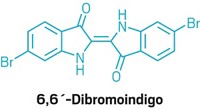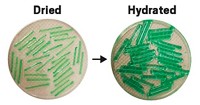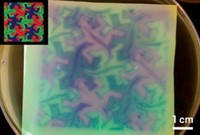Advertisement
Grab your lab coat. Let's get started
Welcome!
Welcome!
Create an account below to get 6 C&EN articles per month, receive newsletters and more - all free.
It seems this is your first time logging in online. Please enter the following information to continue.
As an ACS member you automatically get access to this site. All we need is few more details to create your reading experience.
Not you? Sign in with a different account.
Not you? Sign in with a different account.
ERROR 1
ERROR 1
ERROR 2
ERROR 2
ERROR 2
ERROR 2
ERROR 2
Password and Confirm password must match.
If you have an ACS member number, please enter it here so we can link this account to your membership. (optional)
ERROR 2
ACS values your privacy. By submitting your information, you are gaining access to C&EN and subscribing to our weekly newsletter. We use the information you provide to make your reading experience better, and we will never sell your data to third party members.
Biomaterials
Kombucha inspires engineered living materials
Easy-to-grow films of bacterial cellulose and genetically programmable yeast could sense and respond to toxins, pathogens, and light
by Prachi Patel, special to C&EN
January 21, 2021
| A version of this story appeared in
Volume 99, Issue 3
The trendy drink kombucha gets its fizzy flavor by fermenting tea and sugar in the presence of a slippery, gelatinous blob of microorganisms called a SCOBY—a symbiotic culture of bacteria and yeast. Inspired by this SCOBY, researchers have developed a quick, simple method to grow a living biosensor material made of bacterial cellulose and engineered yeast (Nat. Mat. 2021, DOI: 10.1038/s41563-020-00857-5). The sustainable material could be used to detect pathogens, degrade pollutants, and purify water, the researchers say.
The work belongs to the emerging field of engineered living materials (ELMs), which melds synthetic biology with materials engineering. While synthetic biologists genetically tune individual cells to produce molecules, sense toxins, and gobble up pollutants, ELM researchers aim to create structural materials, incorporating complex communities of different cells or organisms that can be programmed to do those jobs.
Their vision is to use ELMs for environmentally friendly, self-healing devices that are easy and cheap to grow and to genetically tailor for particular uses, says Timothy Lu, a synthetic biologist at the Massachusetts Institute of Technology. “You could grow a sensor in your house to detect heavy metals or viruses in your drinking water.”
Lu’s group had previously reported bacterial biofilms embedded with gold nanofibers for sensing, but the films were flimsy. So Lu, bioengineer Tom Ellis of Imperial College London, and their colleagues set out to make sturdy ELMs on a large scale.
Motivated by kombucha, they cultured an engineered lab strain of Saccharomyces cerevisiae yeast with the bacteria Komagataeibacter rhaeticus, which produces cellulose. Bacterial cellulose fibers form strong films that have found use in wound dressings and cosmetics. In the synthetic SCOBY, the film acts as a scaffold holding the yeast and its secreted enzymes, and proteins secreted by the yeast drive the film’s growth. It takes three days to grow the films.
The researchers can engineer the yeast for various functions. One synthetic SCOBY included yeast that produced a glowing protein when exposed to blue light. Another contained a strain that, in the presence of the hormone estradiol, an environmental pollutant, expressed an enzyme to degrade the hormone. Yet another could sense a protein of interest. The yeast could be modified to detect many pollutants, proteins, and biomarkers, and for pollution remediation.
Lu hopes one day to integrate the living material into fabrics that sense harmful chemicals or viruses. The porous material could also include elements to filter out pathogens and contaminants, he says.
“The large-scale manufacture of ELMs has been challenging so far,” says Anna M. Duraj-Thatte, a bioengineer at Harvard University. Using yeasts and bacteria collaboratively to make a hybrid living material is a promising new approach. Only one other hybrid living material, involving cellulose-producing bacteria and a photosynthetic microalgae, has been demonstrated before. But incorporating engineered microbes is new, she says. That the synthetic SCOBY can carry bacteria or yeast with a variety of functions offers opportunities for many applications, she says.
This work is also “really cool” because the materials can respond in multiple ways to several different types of stimuli, says Neel S. Joshi, a chemist and bioengineer at Northeastern University. Plus, the ease with which the SCOBY can be grown in bulk is exciting. “In a sense, they almost make themselves,” he says.
The material, like other ELMs, might need to be more stable for commercial uses, Duraj-Thatte says. For now, the SCOBY can be dehydrated and stored for four months, after which it can be rehydrated and used. There are ways to increase the material’s lifetime, say by combining with synthetic polymers, but its temporary nature could be an environmental advantage, Joshi says. “Imagine a living plastic that could trigger its own degradation once its utility is over.”





Join the conversation
Contact the reporter
Submit a Letter to the Editor for publication
Engage with us on Twitter